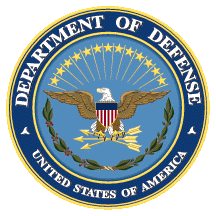Index | Search |





|
The Information Analysis Center (IAC) is an interagency multi-source intelligence fusion center located in the U.S. Embassy in Mexico City which develops actionable intelligence for use by U.S. and Mexican law enforcement agencies. Mexican law enforcement authorities have provided the IAC with considerable case information electronically on major drug trafficking organizations in Mexico drawn from their case files. This information is analyzed and integrated into IAC data bases as well as forwarded to Dominant Chronicle, the Defense Intelligence Agency-FBI document analysis center in the Washington, D.C. area. Time-sensitive information is isolated and checked against U.S. data bases. The combined ("fused") information is then returned to Mexican authorities to support law enforcement operations, e.g., raids against specific drug trafficking locations. Products from Dominant Chronicle are also provided to Mexican law enforcement with expanded analysis for use in its strategic efforts.
This interaction among the IAC, the U.S. national intelligence community, and Mexican law enforcement agencies has resulted in a significant increase in mutual understanding of the structure of Mexican drug-trafficking organizations, and the identity of key figures within these organizations. According to the U.S. Embassy in Mexico City, this interchange and the expansion of U.S. and Mexican understanding of trafficker structures and methods have also led to an increase in operations directed against traffickers, such as the Mexican Army's seizure of a tanker truck containing almost 10 tons of cocaine in the state of Tamaulipas in April 1997, one of the largest seizures of cocaine ever.
Successful law enforcement and interdiction operations often depend upon sharing of detailed tactical information. Again, the IAC plays a key role in the tactical information sharing process. The IAC receives and analyzes reports and other information from tactical counterdrug centers, primarily JIATF West in Alameda, CA; JIATF East in Key West, FL; and the DAICC. In addition, reporting from all members of the national intelligence community is incorporated to form a tactical assessment of drug smuggling trends, routes and methods. A secure communications link between the IAC and CENDRO (the Mexican national counterdrug coordination and intelligence center) has been in place since December 1996 to share sensitive information and has been used with increasing frequency. The link is especially valuable for sharing real-time tracking information to support Mexican end game operations. For example, in July 1997, extensive real-time tracking information on airplanes and fast boats was transferred through the link. While there were no seizures or arrests in Mexican territory at that time, the operation resulted in a 1,000-kilogram cocaine seizure on the waters north of San Andres Island in the Caribbean.
Another example of the effectiveness of tactical information sharing was the seizure of the Mexican fishing vessel "Viva Sinaloa" in January 1997. Initial intelligence reports indicated an at-sea transfer of drugs would occur in the Eastern Pacific involving a ship coming from Colombia which would be met offshore by a vessel from Mexico. The IAC served as the coordination point for the maritime patrol assets under the command of JIATF-West and Mexican naval units which were deployed to interdict the trafficking vessels. Locational data were passed from the U.S. maritime patrol assets to the IAC, which relayed the information to the Mexican naval units. The Mexican Navy boarded the "Viva Sinaloa" and escorted it into port, resulting in the seizure of more than three metric tons of cocaine.
The IAC also plays several key roles in bilateral cooperation against the air trafficking threat. Most initial detections of potential drug shipments via aircraft originate using Relocatable Over-the-Horizon Radar based in the continental United States. This information is passed to IAC where it is checked against drug trafficking profiles. If the initial detection is validated as a suspect flight, the IAC passes the information to Mexican counterdrug authorities over the secure electronic link. Mexican and USCS tracker and interception aircraft are alerted and when the target comes within range, Mexican interceptor aircraft are launched. During the first seven months of 1997, IAC air alerts resulted in a foiled airdrop in Mexican waters; the seizure of 175 kilograms of cocaine, 32 kilograms of marijuana, an aircraft, and a vehicle; and the arrest of four persons on drug-related charges.
The exchange of information between CENDRO and the US Customs Service [USCS] Aviation Liaison Officer in the IAC concerning suspected maritime trafficking has enhanced coordination on reconnaissance flights.
